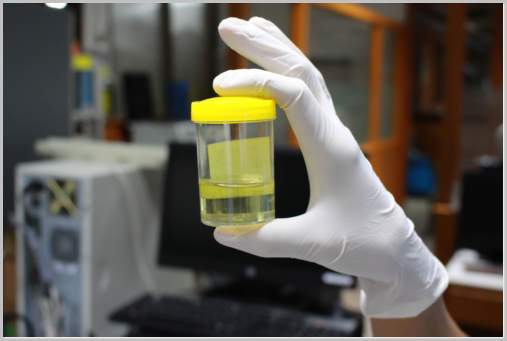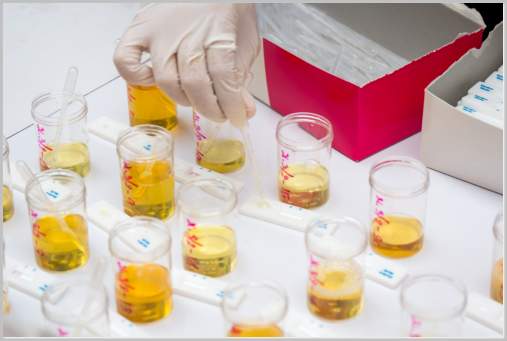 Dark or cloudy urine might mean several things that you may wonder whether it needs to be checked out by a health professional or not? If there are not other symptoms present in a urinalysis and checkup, here are some home care that can possibly help you clear up this condition.
Dark or cloudy urine might mean several things that you may wonder whether it needs to be checked out by a health professional or not? If there are not other symptoms present in a urinalysis and checkup, here are some home care that can possibly help you clear up this condition.
Simple Causes
With either gender, smoky or opaque urine can occur when the person has not gotten enough fluids into his system. Simply drinking more water for a few days may cause the urine to return to its normal light yellow color.
Cloudy urine could be caused by medicines like Ropinirole or Requip used to treat Parkinson’s disease. Certain foods like rhubarb which makes urine slightly brownish in hue and carrots which may color urine a brighter yellow than normal sometimes cause cloudy urine. Large amounts of milk (the excess calcium causing the discolor) can show its presence in cloudy urine.
How to Tell if your Urine Sample Cloudy?
Truly cloudy urine is a symptom of many problems that require immediate intervention. However, as we mentioned above, there are several environmental factors that can make urine appear cloudy or discolored that are less urgent. So, how do you tell if your urine sample is truly cloudy?

First do a visual inspection of your urine sample in a clean clear container. You can get a good clean catch sample at home by sanitizing or washing the area around the urethral opening before you urinate into the container. Healthy urine will always be a clear light yellow without particulates (floating particles).
NON-URGENT CAUSES AND INTERVENTIONS
– Refrigeration –
Refrigerating a urine sample will make it look cloudy. If you are bringing a sample turned cloudy in the refrigerator to the doctor’s office it will not effect any test.
– Growing Bacteria –
If a sample is kept at room temperature for a long period of time bacteria will grow in it making the urine appear cloudy. Don’t leave samples out overnight or all day. Try to use the freshest urine samples possible for medical tests unless specified by your doctor.
– Vaginal Discharges-
A urine sample may be contaminated by normal vaginal discharge. So, to avoid having to distinguish between cloudy and tainted urine always obtain a clean catch sample.
Women in labor may also have urine samples contaminated by amniotic fluid mixed with vaginal discharge and sometimes blood. Pregnant women who have a leakage of urine and are unsure if their “waters” have broken around the time of labor need to have all samples checked since the discharge may not be urine but a dribbling of amniotic fluid before true labor begins. Call your doctor right away if this symptom begins.
URGENT CAUSES AND INTERVENTIONS
– Dehydration-
Concentrated cloudy urine is dark in color, and is often an early indication of dehydration so increase your fluids. Dehydration is not to be taken lightly. If you are hydrated and can not urinate you need to see a heath care professional immediately. This indicates a blockage or disease.
– Infection –
Truly cloudy urine, frequent urination and a strong odor to the urine are early warning signs of that trouble is brewing. See your doctor as soon as possible.
Any clean caught urine that is dark brown, reddish, or contains bright red blood requires immediate attention since at the very least these symptoms indicate an severe infection that will lead to extremely painful bladder spasms and kidney failure.
– Urethral Discharges in Men –
If a man’s urine sample is cloudy and accompanied by a discharge, he should be seen by a doctor since it may indicate disease and or infection. Any male urinary symptom such as a decrease in the flow or fluctuations and pain during the flow of urine should be reported to your doctor immediately.
– Abnormal Discharges In Women –
If you have cloudy urine contaminated by a vaginal discharge that has a very strong odor even after cleansing, you should take urgent steps to see your doctor. If the discharge is accompanied by fever, brown or red blood staining, nausea and or pain, you will need to have immediate emergency treatment since these are signs of toxic shock that could become more serious.
LISTENING TO THE WARNINGS
Truly cloudy urine is an early symptom of many problems that are easily treated as an out patient if caught on time. Listen to what your body is saying and you will be spared from a costly trip to the emergency room, and a lot of pain.
Additional Information on Cloudy Urine when to Worry
It is important to keep a check on your urine if you are diabetic, as sometimes certain ketone’s are excreted in the urine and this shows your adrenal glands (kidney glands) are not working properly. As diabetic people are more prone to kidney failure, it is vital that you ensure your urine is not showing signs of ketones.
Whatever the reason for the cloudiness of the urine, it does no harm to drink water at various times during the day. Not too much at once as this can be just as detrimental to your health, but regular small amounts keep the body fluids moving freely and will reduce the cloudiness/signs of dehydration in the urine.
I hope this advice has been of some help. Cloudiness of the urine may appear to be a very minor change which you may not think is worth bothering a professional with, however, it can be an early sign of something more serious. It is best to have this checked – just to be on the safe side.
UTI and Cloudy Urine
 Urinary tract infections (UTIs) may be tricky to self-diagnose unless you have had one in the past and can recognize the signs. With a UTI you will feel like you have to get to a bathroom immediately. You will feel the urge to urinate quite often but get small amounts and feel pain or burning with each attempt. The urine will be cloudy or have blood in it and will have a very unpleasant smell. As with most infections, the sufferer will have a fever.
Urinary tract infections (UTIs) may be tricky to self-diagnose unless you have had one in the past and can recognize the signs. With a UTI you will feel like you have to get to a bathroom immediately. You will feel the urge to urinate quite often but get small amounts and feel pain or burning with each attempt. The urine will be cloudy or have blood in it and will have a very unpleasant smell. As with most infections, the sufferer will have a fever.
When the UTI is confined to the urethra, it is called urethritis. A doctor will treat this condition with antibiotics for one or two weeks, but after the first two days the condition should show signs of improvement. Increasing water intake, which increases urine amounts to cleanse the tract of the infectious bacteria, and drinking slightly diluted cranberry juice, which acidifies the urine, helps greatly. Another recommended home treatment aid is to drink an 8 ounce glass of water to which has been added one-half teaspoon baking soda. For the time being, eliminate other things from your diet which may irritate the bladder. Wear loose-fitting clothes and apply heat to the lower abdomen.
If, after two weeks of being treated for urethritis, the condition stays the same or worsens, the infection may have spread. Cystitis is an inflamed or infected bladder and can be the extension of untreated urethritis. It mimics all of the UTI symptoms with the addition that the patient will feel pain or pressure in the bladder or pelvic area, a feeling which is temporarily relieved by drinking more water.
Cystitis and prostatitis left untreated may progress to pyelonephritis, a bacterial kidney infection. Glomerulonephritis, inflammation of the kidney’s internal structure, the part that filters blood, is sometimes due to changes in the immune system. These are the truly dangerous conditions that can be fatal if left alone. These infections manifest symptoms like any other UTI except the pain is located in the side, back, or groin, the fever is much higher, voiding is painful, and urine content does not decrease. At this point, the kidneys may become so damaged that they begin to shut down. The infection may spread into the circulatory system.
Causes for Medical Intervention
The online medical sites encourage anyone experiencing the following signs to see a doctor:
1) If you have to hurry to get to the bathroom, and not because you waited too long;
2) Pinkish tinged or bloody urine;
3) Urination that is burning or painful;
4) Pain in the side, back, or groin, and;
5) Fever.
In addition if a woman has more than two UTIs a year, further medical analysis may be needed.

